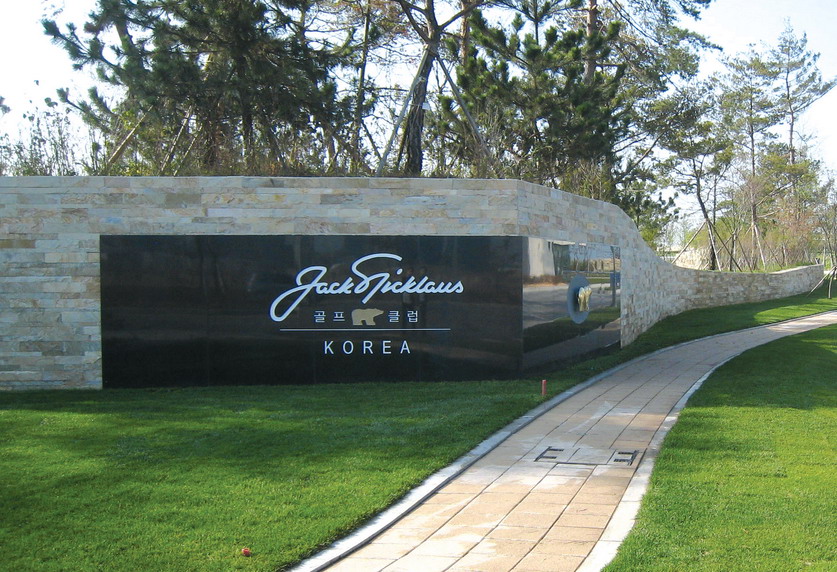For approximately half a century, Jack Nicklaus – also known as the “Golden Bear” because he’s a University of California – Berkeley graduate — has been synonymous with golfing excellence. As age gradually limited the six-time Masters champion’s prowess on the links, he’s gained emeritus stature as a designer of premier golf courses and an ambassador for the game.
As the sport Mark Twain once rebuked as “a good walk spoiled” has attracted countless aficionados from across the globe, demand for golf courses has grown even during economically troubled times. This has held particularly true in Asia, which has remained a hub of technology and commerce.
Nicklaus designed his first Korean course for the Jack Nicklaus Korea Golf Club in New Songdo City, a booming suburb of Incheon City that’s forecast to offer more than 50 million sq. ft. of office space by 2015 (and, thus, lots of executives looking to close deals, recruit employees or simply escape to some greenspace on the course).
EDSA’s Orlando, FL office, which served as the property’s architect, hired Lorenc+Yoo Design, a Roswell, GA-based firm which derives approximately half of its business internationally, to develop the Nicklaus clubs’ gateway entrance and complementary wayfinding and environmental graphics. Jan Lorenc, the firm’s co-principal, said the club’s EGD combines various textures, scales, and “form-on-form” function, which features intersecting colors, textures and components. For instance, on the property’s stately monument sign, traditional Korean stone integrates with sleek, polished-black granite and an elegant, reflecting-pool feature.
“We created a diverse mix of materials and elements to develop contrasts that create a unique experience,” he explained. “It’s welcoming, yet private, contemporary, yet traditional, understated, yet bold. When there’s enough consideration given to how to intermingle a project’s environment and components, signage and environmental graphics can accomplish this.”
The program incorporates six sign types: primary gateway sites, clubhouse signage, site-directional placards, street signage, service-entrance signs and monuments at every tee (at presstime, Lorenc didn’t know what Korean fabricator[s] had built the signage).
Advertisement
To develop the monument’s scale, Lorenc+Yoo designed the entire entry statement, which includes the wall, signage, fountain and conceptual landscape pattern. The firm worked in conjunction with EDSA’s landscape architects and the client to execute the program’s design and engineering.
The 18 x 6-ft. entry monument, as part of the overall wall composition, provides the focal point that creates an imposing façade that forms the club’s perimeter. It comprises a sandblasted logo, copy and rule line that are infilled with white lithichrome, a paint designed to infill granite and maintain the same texture amidst any weather conditions. The signature “Golden Bear” logo entails a custom, cast, gold-painted piece that’s pin-mounted to the granite.
Linear, fluorescent lighting provides accenting illumination for the entrance-facing sign. The lighting’s brightness and direction had to be carefully managed to both highlight the sign’s bear icon and avoid shadows of the light fixtures against granite, a highly reflective surface. On the face that greets those leaving the club, white LEDs installed within the granite wall created a subtle halo effect on an oval-shaped, bear logo – the only visual element on that side (a simple testament to the brand Nicklaus has built for himself over his career).
The directional and street signs feature internal, LED lighting and wayfinding messages delivered in the typeface DIN Condensed Medium, a slim, sans-serif font designed by Russian Tagir Safayev that’s legible, yet more inviting than Helvetica or Garamond. The directional signs also implement the “Bear” as the sole message on the exit side of the directional program. The golf-course signs feature 0.125-in.-thick, aluminum faces that are infilled to make the signfaces appear seamless.



 Tip Sheet3 days ago
Tip Sheet3 days ago
 Business Management1 week ago
Business Management1 week ago
 Women in Signs2 weeks ago
Women in Signs2 weeks ago
 Real Deal4 days ago
Real Deal4 days ago
 Editor's Note1 week ago
Editor's Note1 week ago
 Line Time2 weeks ago
Line Time2 weeks ago
 Product Buying + Technology1 week ago
Product Buying + Technology1 week ago
 Women in Signs4 days ago
Women in Signs4 days ago







